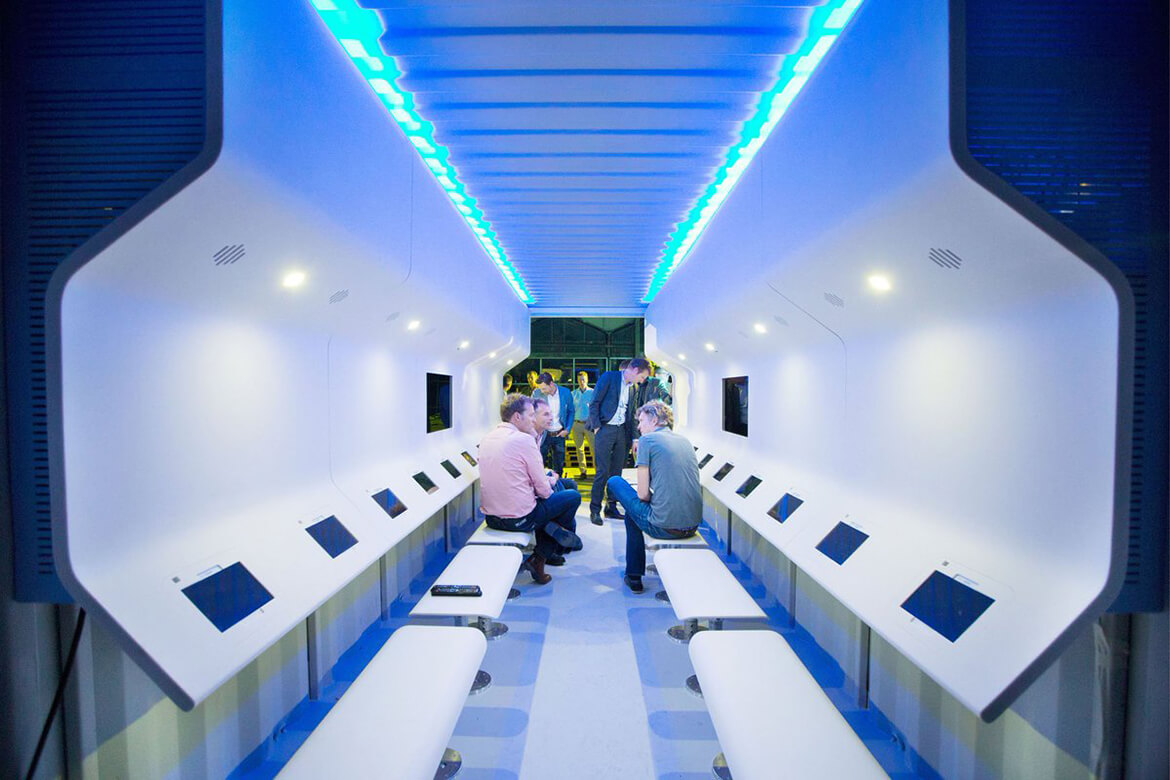
Could floating shipping containers help sort out the world’s slums?
By Barbara Speed
Written by Citymetric
August.14.2014

“What if a city was as flexible as a shuffle puzzle?” Koen Olthuis asked in his 2012 TEDx talk. He was referring to those games in which you move squares around until you make a picture. At the time, his audience probably didn’t realise he was serious.
But using moveable little boxes to meet a city’s needs were exactly what Olthuis was proposing. His talk was on the subject of the “Floating City Apps” developed by his architectural firm, the Netherlands-based Waterstudio. (You may remember them from their plans for a floating golf course in the Maldives. Or maybe you saw their designs for a snowflake-shaped hotel off the coast of Norway.)
These mobile buildings would float on bodies of water at the edges of cities. They could also be moved around according to a city’s needs, and could fulfil a range of different functions. Some would be educational, with internet access and computers; others could act as bakeries, housing, healthcare centres, or floating mats of solar panels.
In June, the first piece of Olthuis’ shuffle puzzle was completed: an educational suite which will double up as an internet cafe in the evenings, all powered by solar panels on its roof. It’s been built inside a shipping container, to makes it easy to transport; a base constructed from thousands of plastic bottles collected by slum residents will be added once it reaches its destination.
It’s due to be shipped out to a slum in Manila in the autumn. Here’s the architect’s mock-up of the city app in situ.
Olthuis’ interest in water-based construction was inspired partly by his home country: around half the Netherlands lies below sea level, and massive amounts of water are pumped away daily to keep the country high and dry. But it’s not the low countries that could benefit most from this kind of architecture: it’s the rapidly growing and slum-packed cities of the developing world, and wet slums – those edging onto bodies of water, and so at risk of rising sea levels – were forefront in Olthuis’ mind when he came up with the idea:
“They’re some of the hardest areas to help, because they’re so close to the water,” he says. “People are unwilling to invest in development that could flood, or just wash away.” His hope is that these City Apps could help change that: the units they would rise with sea levels if an area floods, and could be moved elsewhere if necessary. This first app was funded by the prize money from the 2012 Architecture and Sea Level Rise Award, the studio and other sponsors; in future, the studio is hoping to build them then lease them out to NGOs and development agencies for a low monthly cost.
There’s a case for helping the world’s 1.1bn slum dwellers to more permanent settlements, rather than just improving the slums, of course. But in Olthuis’ view, “slums aren’t going to go away, so the only thing we can do is upgrade their prosperity”. There are a few creases to iron out first, though – at the moment, the studio may have to pay tax on transporting the Manila app, and are meeting with embassies to try and avoid this “real waste of money”.
While the city app will be run by a local organisation once in Manila, Olthuis is keen to stay involved. “The most important thing is that we can measure the app’s effects, and check how it’s working.” He wants to build hundreds, even thousands, more apps for different purposes around the world: 90 per cent of the world’s largest cities border a body of water, whether it be river, lake, or sea, so the project’s applications could stretch far beyond wet slums. Because of their floating foundations, the apps are relatively stable, though they may not work so well in waters prone to violent waves.
For Olthuis, floating architecture offers a way to use the dead space off the coasts of cities. It also offers flexibility, as units can be moved to a different location, or even another city, as the needs of the surrounding area change – just as you can change the apps on your phone.